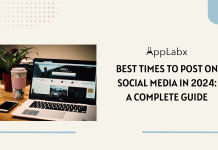Key takeaways
- Elevate Visibility: Master the strategic use of keywords and trends in your YouTube titles to enhance search engine visibility, driving more views to your content.
- Audience-Centric Approach: Understand your audience’s preferences and needs to tailor titles that resonate, fostering lasting engagement and loyalty.
- Seamless Call-to-Action: Craft compelling CTAs within your titles to guide viewers towards desired actions, transforming views into subscribers and likes into a thriving community.
In the vast expanse of the digital realm, where content is king and engagement reigns supreme, the art of crafting compelling YouTube video titles emerges as a formidable skill in the arsenal of content creators.
As the gateway to your video’s soul, the title serves as the first impression, the magnetic force that beckons viewers into the immersive world you’ve meticulously curated.
In an era dominated by the insatiable appetite of online audiences, mastering the alchemy of titling is the linchpin that can propel your content from the shadows into the spotlight.

The nuanced art of crafting YouTube video titles
In this digital odyssey, our compass points us toward the heart of the matter — the nuanced art of crafting YouTube video titles that not only arrest the attention of your target audience but also trigger the algorithmic gears that drive views.
Join us on this expedition as we navigate the terrain of audience psychology, delve into the labyrinth of SEO intricacies, and decode the DNA of titles that resonate across screens and cultures.
It’s not a one-size-fits-all endeavor
Before we embark on this journey, it’s crucial to understand that crafting compelling video titles is not a one-size-fits-all endeavour.
No, it’s an intimate dance between creator and audience, a symbiotic relationship where resonance is the currency.
We’ll explore the multifaceted layers of this art, dissecting the anatomy of successful titles and deciphering the cues that captivate the ever-elusive viewer.
Are you ready to transcend the mundane and elevate your YouTube game?
Brace yourself for a deep dive into the world of linguistic allure, strategic optimization, and the unwritten rules of digital charisma.
From understanding your audience’s pulse to strategically embedding keywords that send ripples through the algorithmic pond, we’re about to unravel the secrets that can turn your video titles into beacons in the vast sea of online content.
Before we venture further, we like to share who we are and our digital experiences.
About AppLabx
From developing a solid marketing plan to creating compelling content, optimizing for search engines, leveraging social media, and utilizing paid advertising, AppLabx offers a comprehensive suite of digital marketing services designed to drive growth and profitability for your business.
AppLabx is well known for helping companies and startups use YouTube Marketing to drive web traffic to their websites and web apps.
At AppLabx, we understand that no two businesses are alike. That’s why we take a personalized approach to every project, working closely with our clients to understand their unique needs and goals, and developing customized strategies to help them achieve success.
If you need a digital consultation, then send in an inquiry here.
How to Craft Compelling YouTube Video Titles That Drive Views?
- Understanding Your Audience
- Utilizing Keywords Strategically
- Creating Attention-Grabbing Titles
- Optimal Length and Formatting
- Avoiding Clickbait and Misleading Titles
- Leveraging Trends and Pop Culture
- Call-to-Action
1. Understanding Your Audience

The Crucial Role of Audience Understanding
In the realm of YouTube video title crafting, the compass guiding your choices is none other than a profound understanding of your audience.
To embark on this journey, let’s delve into the intricacies of deciphering demographics, preferences, and behavioral patterns that shape the viewership landscape.
Also, read our top guide on “SEO Title Tags: The Ultimate Guide for Best Practices and Tips” to learn about crafting the best SEO Titles.
Identifying Target Audience Demographics
Understanding your audience begins with unravelling the intricate tapestry of demographics.
Who are your viewers? What age group dominates your audience? Do they hail from specific geographical locations?
These questions pave the way to tailor your titles to resonate with the very individuals you seek to captivate.
Example: For a gaming channel targeting young adults, titles incorporating popular gaming references, memes, and language trends can establish an immediate connection.

Analyzing Viewer Preferences and Behavior
To craft titles that resonate, one must become a virtual anthropologist, studying the digital footprints of viewers.
Analyze metrics such as watch time, click-through rates, and audience retention to discern what content appeals most to your audience.
Tailoring Titles to Resonate with Your Specific Audience
Now armed with demographic insights and behavioural patterns, it’s time to speak the language of your audience.
Tailor titles to reflect the tone, interests, and aspirations of your viewers, creating an immediate bond that transcends the screen.
Example: A fitness channel targeting middle-aged individuals might opt for titles that speak to the desire for sustainable health, such as “Transform Your Life: Easy Fitness Hacks for Busy Professionals.”

The Power of Emotional Resonance
Eliciting Emotions Through Titles
Emotion is the currency of engagement, and your titles are the emotional triggers.
Craft titles that evoke curiosity, joy, or even a touch of suspense to forge a deeper connection with your audience.
Positive emotions such as joy, inspiration, and amazement can generate a high level of engagement and motivate people to share the content.
Utilizing Storytelling Elements in Titles
Human brains are wired for stories.
Infuse storytelling elements into your titles, creating a narrative that viewers can’t resist clicking on. Pose a question, present a challenge, or hint at a journey, inviting viewers to be a part of the unfolding story.
Example: A travel vlog titled “Lost in Tokyo…” not only piques curiosity but also introduces an element of personal connection.
Connecting Titles to Audience Aspirations
Titles that align with viewer aspirations become irresistible invitations.
Understand the desires and goals of your audience, then frame titles that position your content as the gateway to fulfilling those aspirations.
Example: A finance channel might create titles like “Master Your Money: Achieve Financial Freedom in 5 Simple Steps,” directly addressing the aspiration for financial independence.
Harnessing Analytics for Informed Decision-Making
Leveraging YouTube Analytics
YouTube provides a treasure trove of analytics tools.
Dive into metrics like traffic sources, and viewer demographics, and watch time to refine your understanding continually. Identify which titles resonate most and iterate on successful patterns.

Adapting to Viewer Feedback
Engage with your audience through comments, surveys, or social media to glean direct insights.
Pay attention to recurring themes, preferences, and suggestions, using them to shape not only your content but also your titles.
Example: If viewers consistently express interest in specific topics, incorporate those themes into your titles to meet audience expectations.
Iterative Optimization Based on Performance Metrics
The YouTube landscape is dynamic, and so should be your approach.
Regularly revisit your titles, analyze performance metrics, and be willing to tweak and optimize. Embrace a culture of continuous improvement based on real-time data.
2. Utilizing Keywords Strategically

The SEO Alchemy: Strategic Keyword Integration
In the digital labyrinth of YouTube, where visibility is the currency of success, strategic keyword integration in your video titles acts as the compass guiding the algorithm to your content.
Let’s unravel the intricacies of this SEO alchemy, exploring the importance of keywords, conducting research, and seamlessly integrating them into your titles.
Importance of Incorporating Relevant Keywords
Keywords are the building blocks of discoverability.
They bridge the gap between user intent and your content, dictating whether your video emerges as a relevant search result or remains lost in the digital ether.
Conducting Keyword Research for Video Titles
Effective keyword integration begins with thorough research.
Leverage tools like Google Keyword Planner, YouTube’s autocomplete feature, and third-party platforms to identify high-ranking, relevant keywords in your niche.

Example: For a cooking channel, researching trending keywords like “easy recipes,” “quick meals,” and “beginner-friendly cooking” can unveil strategic opportunities.

Integrating High-Ranking Keywords Naturally into Titles
Strategic integration is an art; keywords should seamlessly blend with your titles without compromising clarity or appeal.
Craft titles that not only align with high-ranking keywords but also resonate with the language and expectations of your audience.
The Dance of Language: Using Compelling Words and Adjectives
The Power of Compelling Language
While keywords are the backbone, compelling language is the heartbeat of your titles.
Infuse adjectives that evoke emotion, curiosity, or urgency, elevating your titles beyond mere descriptors to attention-grabbing invitations.
Example: Instead of “10 Ways to Save Money,” a finance channel might opt for “Revolutionize Your Finances: 10 Ingenious Money-Saving Hacks.”
Incorporating Curiosity and Intrigue
Curiosity is a potent force that propels clicks. Pose questions, tease revelations, or hint at unexpected twists within your titles to ignite the curiosity of potential viewers.
Highlighting the Value Proposition for Viewers
Your title is an implicit promise to your audience.
Clearly articulate the value they will gain from watching your video.
Whether it’s entertainment, knowledge, or practical tips, make it evident in your titles.
Example: “Unlock Your Creative Potential: A Masterclass in Digital Art” communicates the value of skill enhancement and creative exploration.
3. Creating Attention-Grabbing Titles

The Art of Captivation: Creating Attention-Grabbing Titles
In the dynamic landscape of YouTube, where attention is a prized commodity, the ability to craft attention-grabbing titles is the linchpin to capturing the elusive focus of your audience.
Let’s unravel the intricacies of this art, exploring the psychology of attention, linguistic strategies, and real-world examples that resonate across the digital spectrum.
Understanding the Psychology of Attention
The human attention span is fleeting, especially in the digital era.
Crafting titles that stand out amidst the digital noise requires an understanding of the psychological triggers that captivate viewers.
According to a study, the average human attention span dropped from 12 seconds to 8 seconds.
Using Compelling Language and Adjectives
Compelling language is the heartbeat of an attention-grabbing title. Employ adjectives that evoke emotion, curiosity, or urgency to infuse your titles with an irresistible allure.
Example: Instead of a generic title like “Healthy Eating Tips,” a more compelling title could be “Revitalize Your Body: 10 Life-Changing Healthy Eating Hacks.”
Incorporating Curiosity and Intrigue
Curiosity is the catalyst for engagement.
Pose questions, tease revelations, or hint at unexpected insights within your titles to pique the curiosity of potential viewers.
Tapping into Emotional Resonance
Emotions are powerful triggers for attention. Craft titles that tap into the emotions of your audience, whether it’s joy, excitement, or empathy, to create a deeper connection.
Example: A travel vlog titled “Rediscovering Paradise: A Journey to Serenity” not only evokes a sense of adventure but also taps into the viewer’s desire for relaxation.
Crafting Titles for Maximum Engagement
Understanding Your Unique Value Proposition
What sets your content apart?
Clearly articulate your unique value proposition in your titles.
Whether it’s entertainment, education, or inspiration, make it evident to your audience.
Eliciting a Strong Call-to-Action
Titles are not just descriptors; they are invitations.
Incorporate a strong call-to-action that prompts viewers to take a specific action, whether it’s watching, sharing, or commenting on your video.
Example: “Unleash Your Creativity: Join the Art Revolution Today” encourages viewers not just to watch but to actively participate.
Harnessing the Power of Numbers
Numerals in titles have a magnetic effect on attention.
Whether it’s a listicle, a countdown, or a how-to guide, incorporating numbers provides a clear structure that appeals to viewers.
Examples of Attention-Grabbing Titles
BuzzFeed’s Mastery of Curiosity-Driven Titles
BuzzFeed, a content giant, excels in creating titles that leverage curiosity. For instance, “Can We Guess Your Age Based on Your Taste in Movies?” not only engages the viewer but also encourages interaction.
National Geographic’s Emotional Resonance
National Geographic often taps into emotional resonance with titles like “Most Heartwarming Animal Reunions with Humans That Will Melt Your Heart.” By invoking emotions, they establish a connection with viewers.
TED-Ed’s Clever Use of Numbers
TED-Ed frequently uses numbers to structure their content, such as “5 Ways to Listen Better” or “The Mathematics of History.” This not only provides clarity but also entices clicks.
Analyzing the Impact: Metrics and Optimization
Measuring Click-Through Rates (CTR)
Your title’s effectiveness is measurable through CTR.
Regularly analyze this metric to understand which titles resonate most with your audience and refine your approach accordingly.

A/B Testing for Title Optimization
Experimentation is key to optimization.
Conduct A/B testing with different title variations and analyze performance metrics to discern patterns and refine your strategy.
Example: Testing variations like “10 Quick Recipes” against “Effortless Cooking: 10 Recipes in 10 Minutes” can unveil insights into what appeals more to your audience.
Iterative Refinement Based on Analytics
In the digital realm, evolution is constant.
Regularly revisit and refine your titles based on real-time analytics. Embrace an iterative mindset to stay attuned to shifting audience preferences.
4. Optimal Length and Formatting

Striking the Balance: Optimal Length and Formatting
In the ever-evolving landscape of digital content, where first impressions are made in the blink of an eye, the optimal length and formatting of your YouTube video titles wield considerable influence.
Let’s delve into the intricacies of finding the right balance, exploring the impact of title length, the nuances of formatting, and real-world examples that embody effective practices.
Ideal Character Count for YouTube Titles
The length of your title is not a mere aesthetic consideration; it directly impacts visibility and engagement. Striking the right balance ensures that your titles are both informative and enticing.
A study reveals that titles with approximately 60-70 characters are the most optimal.
Beyond this, titles risk truncation in search results.

The Importance of Front-Loading Key Information
In a world where attention is scarce, the initial words of your title carry disproportionate weight.
Front-load key information, such as the main topic or keyword, to ensure immediate clarity and relevance.
Example: “Photography Tips: How to Capture Stunning Sunsets” communicates the essence right from the start, captivating potential viewers with the promise of valuable advice.
Mobile-Friendly Titles for Diverse Devices
Considering the diverse array of devices through which users access YouTube, optimizing titles for mobile readability is paramount.
Clarity and brevity become especially crucial when viewed on smaller screens.
According to Think with Google, over 70% of YouTube watch time occurs on mobile devices, underscoring the necessity of mobile-friendly titles.
Strategies for Crafting Effective Titles
Utilizing Numerals for Structure
Numbers not only provide a clear structure but also act as visual anchors, capturing attention amidst a sea of text.
Whether it’s a listicle, a tutorial, or a countdown, numerals enhance readability and engagement.
Harnessing Punctuation for Emphasis
Strategic use of punctuation can add emphasis and intrigue to your titles.
However, moderation is key; excessive punctuation may lead to visual clutter and a less professional appearance.
Example: “Unleash Your Potential: The Power of Mindfulness” effectively uses a colon for emphasis, enticing viewers to explore the transformative content within.
Strategic Use of Keywords
While incorporating keywords is crucial, their strategic placement within the limited character count is equally significant.
Position keywords early in the title to ensure visibility and align with user search intent.
Examples of Optimal Length and Formatting
Tech Insider’s Concise and Informative Titles
Tech Insider excels in crafting titles that are both concise and informative. For instance, “How Tesla’s Autopilot Works” succinctly communicates the topic while maintaining brevity.
National Geographic’s Use of Numbers and Punctuation
National Geographic often incorporates both numbers and punctuation for impact. Titles like “7 Wonders of the World: Discover the Extraordinary” leverage these elements for clarity and intrigue.
TED’s Clear and Front-Loaded Titles
TED Talks are renowned for their impactful titles. “The Power of Vulnerability | Brené Brown” not only front-loads key information but also uses a vertical bar for a clean separation.
5. Avoiding Clickbait and Misleading Titles
The Pitfalls of Clickbait: A Cautionary Tale

In the labyrinth of digital content, where the competition for viewer attention is fierce, the allure of clickbait can be tempting.
However, falling prey to the dark side of sensationalism can have detrimental effects on your credibility, audience trust, and overall channel health.
Let’s navigate the treacherous waters of clickbait, understand its consequences, and explore strategies to create compelling titles without resorting to misleading tactics.
The Negative Impact of Clickbait on Audience Trust
Clickbait, often characterized by exaggerated promises or misleading information, erodes the trust that viewers place in content creators.
This can lead to a decline in audience loyalty and engagement.
Balancing Curiosity with Transparency
Compare a clickbait title like “Unbelievable Weight Loss Secret Revealed” with a more transparent alternative such as “Science-Backed Tips for Healthy Weight Loss.”
While it’s essential to evoke curiosity, it’s equally crucial to maintain transparency and deliver on the promises made in the title.
The Honest Path: Crafting Titles with Integrity
Setting Realistic Expectations in Titles
According to a survey, 82% of consumers feel more positive about a company after reading custom content, but only if the content is perceived as valuable and not deceptive.
Titles should accurately represent the content they accompany. Misleading titles can lead to disappointment, frustration, and a negative perception of your brand.
Building Trust Through Consistency
If your channel is known for providing insightful tutorials, a title like “Expert Tutorial: Mastering Photoshop” is more credible than a sensationalized version.
Consistency in delivering valuable content builds trust over time.
Align your titles with the authentic voice and expertise your audience expects.
Navigating the YouTube Algorithm: The Impact of Engagement
Understanding YouTube’s Algorithm Basics
YouTube’s algorithm takes into account various factors, including watch time, likes, comments, and click-through rate (CTR), to determine a video’s ranking in search results and recommendations.
Misleading titles may lead to high initial click-through rates but can result in low watch time and engagement, signalling to the algorithm that the content doesn’t meet viewer expectations.
Long-Term Impact on Video Performance
A study found that videos with higher watch time are more likely to appear in YouTube’s suggested video recommendations.
While clickbait might generate short-term views, it often results in low watch time and decreased visibility in the long run, hampering the overall performance of your videos.
Striking a Balance: Creating Compelling Titles Responsibly
Choosing Language Wisely
Compare a clickbait title like “You Won’t Believe What Happened” with a more measured alternative like “Unexpected Moments: A Day in the Life of a Traveler.”
Select language that sparks curiosity without resorting to hyperbole or misleading statements.
Honest intrigue fosters a healthier audience relationship.
Emphasizing Value Over Sensation
Titles should emphasize the value viewers will gain from watching, fostering an audience-centric approach that builds trust and loyalty.
Prioritizing Long-Term Audience Growth
Compare a clickbait title like “Shocking Truth Exposed” with a value-driven alternative like “Navigating Challenges: A Realistic Approach to Overcoming Obstacles.”
Prioritize long-term audience growth over short-term spikes in views.
Quality content and honest titles contribute to sustained engagement and subscriber retention.
Learning from Past Mistakes
Analyzing Clickbait Backlash
A channel that consistently used clickbait titles experienced a decline in subscriber growth and an increase in negative comments, indicating viewer dissatisfaction.
Learning from such cases emphasizes the importance of maintaining audience trust for sustainable channel growth.
Successful Channels Embracing Authentic Titles
Channels known for authenticity and value-driven content, like Vsauce and TED-Ed, consistently use titles that accurately represent the informative and engaging nature of their videos.
Building a brand based on authenticity and delivering on promises in titles leads to sustained success and positive audience perception.
The Road to Responsible Title Crafting
Encouraging Responsible Practices Across YouTube
YouTube’s policies prohibit clickbait, stating that content with misleading titles may be removed or demoted in search results.
Embracing responsible title practices aligns with YouTube’s guidelines and ensures the long-term viability of your channel.
Promoting Transparent Communication with Viewers
Channels often include disclaimers or clarifications in video descriptions to ensure viewers understand the content’s nature, promoting transparent communication.
Proactively addressing potential concerns in video descriptions demonstrates a commitment to transparency and audience satisfaction.
6. Leveraging Trends and Pop Culture

The Power of Trending Waves: An SEO Odyssey
In the ever-evolving landscape of YouTube, riding the crest of trending waves and tapping into pop culture currents can be a game-changer for content creators.
By aligning your titles with what’s currently capturing audience attention, you not only enhance discoverability but also engage viewers with timely and relevant content.
Let’s dive into the strategies of leveraging trends and pop culture in YouTube video titles for maximum impact.
The Significance of Trend Integration for SEO
Videos that tap into trending topics or events tend to see a boost in visibility and engagement, thanks to increased search interest.
Integrating trending terms in your titles can enhance your video’s discoverability, capitalizing on the heightened interest surrounding popular topics.
Aligning with Pop Culture: A Gateway to Audience Connection
A beauty tutorial titled “Get the Spider-Man: No Way Home Look” immediately connects with audiences interested in both beauty trends and the latest pop culture releases.
Aligning your content with pop culture not only capitalizes on existing interests but also fosters a connection with viewers who share common interests.
Navigating the Pop Culture Seas: Strategies for Success
Monitoring Trends Through Social Media and Google Trends
Using Google Trends, identify rising search queries related to your niche or content.
If you’re a tech reviewer, staying abreast of new product releases can be crucial.
Regularly monitor platforms like X, Instagram, and Reddit to gauge emerging trends and discussions within your community.
Seamlessly Integrating Trends into Titles
For a cooking channel during the holiday season, a title like “Baking Trends: Festive Treats That Are Taking Over” combines culinary expertise with seasonal trends.
Craft titles that seamlessly integrate trending terms while maintaining clarity about the content’s relevance to the trend.
Leveraging Hashtags for Increased Visibility
According to a study, hashtags can improve a video’s discoverability on the YouTube platform.
Integrating popular hashtags related to ongoing trends can enhance your video’s visibility within search results and recommendations.
Harnessing Timely Events for Relevance
Creating Content Around Seasonal Events
A fashion channel might leverage titles like “Spring Fashion Trends Unveiled: Must-Haves for the Season” to align with the seasonal change in fashion preferences.
Crafting titles that align with seasonal events ensures relevance and captures the audience’s interest during specific periods.
Capitalizing on Cultural Events and Holidays
According to Google, you should consider certain keyword searches spike on Google and other search engines during the holiday season, before the holiday season begins.
Tailoring titles around cultural events and holidays capitalizes on heightened search interest and aligns your content with festive or celebratory themes.
Integrating Title Themes Around Movie and TV Premieres
A film analysis channel might optimize titles during a major movie release, such as “Analyzing the Cinematic Brilliance of [Movie Title].”
Aligning titles with movie and TV premieres capitalizes on the buzz surrounding these releases and attracts viewers interested in related content.
The Ever-Changing Tides: Staying Adaptable
Remaining Agile in Response to Shifting Trends
Staying adaptable to evolving trends ensures that your titles remain relevant and resonate with your audience.
Embracing the Iterative Approach
Regularly revisit and update titles to align with emerging trends, ensuring your content stays at the forefront of audience interests.
A travel channel might update a title from “Top Travel Destinations in 2022” to “Must-Visit Places: A Mid-Year Update” to remain current.
7. Call-to-Action

The Power of Persuasion: Understanding Call-to-Action (CTA)
In the dynamic landscape of digital content, the art of persuasion takes centre stage, and a well-crafted Call-to-Action (CTA) serves as the conductor orchestrating viewer engagement.
In this comprehensive guide, we will delve into the significance of CTAs, explore strategies for their implementation, and analyze real-world examples that showcase the impact of compelling calls to action.
The Essence of Call-to-Action in Digital Content
According to a study, emails with a single CTA increased clicks by 371% and sales by 1617%.
CTAs are not just a rhetorical flourish; they are powerful tools that guide your audience toward desired actions, whether it’s subscribing, liking, sharing, or making a purchase.
CTA Placement: Strategic Positioning for Impact
Whether in a video, blog post, or webpage, strategically placing your CTAs where they are immediately visible can significantly enhance their effectiveness.
Crafting Compelling CTAs: Strategies for Success
Clear and Direct Language
Instead of a vague CTA like “Click here,” opt for a more explicit one such as “Subscribe for Weekly Insights.”
Urgency and Scarcity in CTAs
“Limited-time offer: Grab Your Discount Now” creates a sense of urgency and scarcity, motivating immediate action.
Personalization in CTAs
A personalized CTA like “Unlock Your Exclusive Content, [Viewer’s Name]” fosters a sense of connection.
A report by HubSpot indicates that personalized CTAs perform 202% better than generic ones.
Examples of Effective CTAs
YouTube CTAs: Gamification by MrBeast
MrBeast often uses gamification in his CTAs, challenging viewers to “Subscribe and Join the [X] Challenge” to unlock special content.
This strategy not only increases subscriber count but also enhances viewer engagement by turning subscription into a participatory experience.
The Role of Analytics in CTA Optimization
Utilizing Analytics for CTA Performance Evaluation
Google Analytics provides valuable insights into user behavior, click-through rates, and conversion metrics related to specific CTAs.
Regularly analyze CTA performance metrics to discern patterns, identify successful strategies, and refine your approach.
A/B Testing for CTA Refinement
A/B tests different variations of a CTA, such as “Subscribe Now” versus “Join Our Community,” to determine audience preferences.
According to a study, A/B testing CTAs can lead to a 49% increase in click-through rates.
Iterative Refinement Based on User Feedback
Encourage viewers to provide feedback on CTAs through comments or surveys, informing iterative refinements.
Embrace an iterative mindset, continuously refining CTAs based on user feedback and changing trends.
Multi-Platform Adaptation: Tailoring CTAs for Different Channels
Adapting CTAs for Social Media Platforms
Crafting platform-specific CTAs like “Swipe Up to Explore” for Instagram Stories capitalizes on each platform’s unique features.
Tailor CTAs to suit the user experience and functionality of each social media platform, optimizing for maximum engagement.
Webpage CTAs: Transitioning from Awareness to Action
On a blog post, a CTA like “Learn More About [Topic] – Click to Read the Full Guide” transitions the audience from awareness to deeper engagement.
Customize CTAs to guide users through the different stages of the customer journey, aligning with their evolving needs.
Navigating the Fine Line: Balancing Promotion and Value
Creating Value-Oriented CTAs
Instead of a purely promotional CTA, consider one that adds value, such as “Download Your Free eBook for In-Depth Insights.”
Balancing promotion with value ensures that CTAs resonate with audiences seeking both immediate benefits and meaningful content.
Avoiding Overwhelming CTAs
Overloading your content with CTAs can dilute their impact.
Focus on strategic placement and relevance to avoid overwhelming the viewer.
Ethics in CTA: Transparency and Authenticity
Transparent CTA Language
Instead of an ambiguous CTA like “Get Rich Quick,” use transparent language like “Explore Financial Strategies for Long-Term Success.”
Transparent CTAs build trust by accurately setting expectations and delivering on promises.
Authenticity in CTA Messaging
Instead of a generic “Subscribe Now,” infuse authenticity with “Join Our Community of Like-Minded Explorers – Subscribe for Weekly Adventures.”
Nurturing Long-Term Relationships: Post-Conversion CTAs
Encouraging Further Engagement
After a viewer subscribes, a post-conversion CTA like “Explore Our Latest Videos” encourages continued engagement.
Post-conversion CTAs nurture long-term relationships by guiding users toward additional valuable content.
Collecting Feedback for Continuous Improvement
Implement post-engagement CTAs like “Share Your Thoughts in the Comments” to encourage feedback and interaction.
Gathering feedback post-engagement fosters a sense of community and provides insights for ongoing improvements.
Conclusion
In the vast realm of digital content, where attention is a prized currency and visibility is the gateway to success, the significance of crafting compelling YouTube video titles cannot be overstated.
Through this extensive exploration, we’ve embarked on a journey through the intricacies of title optimization, unraveling the secrets behind driving views, enhancing discoverability, and fostering lasting audience engagement.
As we conclude this guide, let’s distill the key takeaways that can empower creators to navigate the nuanced landscape of title craftsmanship with finesse and strategy.
The Crucial Intersection of SEO and Audience Engagement
The marriage of Search Engine Optimization (SEO) principles with audience-centric strategies forms the bedrock of successful YouTube video titles.
By understanding the language of search algorithms and aligning it with the expectations and interests of their audience, creators can establish a harmonious connection that propels their content to the forefront of search results.
Understanding Your Audience: A North Star for Title Creation
The foundational pillar of title creation lies in a deep understanding of your audience.
By deciphering their preferences, anticipating their needs, and tailoring titles to align with their interests, creators can cultivate a loyal viewership that not only clicks but stays engaged for the long haul.
Leveraging Keywords Strategically: The SEO Alchemy
Strategic integration of keywords, both short-tail and long-tail, emerges as a potent alchemical ingredient in the SEO recipe.
As creators weave these linguistic gems into their titles, they unlock the door to increased visibility, enhanced search rankings, and a broader audience reach.
Crafting Attention-Grabbing Titles: The Art of Intrigue
The delicate dance of crafting attention-grabbing titles requires a nuanced understanding of language, psychology, and the pulse of current trends.
By eliciting curiosity, evoking emotions, and tapping into the zeitgeist, creators can invite viewers on a journey of discovery, enticing them to click and explore.
Optimal Length and Formatting: Striking the Balance
In the world of character limits and fleeting attention spans, the optimal length and formatting of titles become paramount.
Creators who master the art of conciseness without sacrificing clarity navigate the digital landscape with titles that are not only visually appealing but also highly clickable.
Avoiding Clickbait and Misleading Titles: Building Trust
In the pursuit of views, the allure of clickbait can be tempting, but the consequences of misleading titles are profound.
Creators who prioritize transparency, authenticity, and the delivery of value build a foundation of trust that not only safeguards their audience relationships but also ensures sustainable growth.
Leveraging Trends and Pop Culture: Riding the Waves of Relevance
The dynamic nature of digital content demands creators to be attuned to trends and pop culture currents.
By aligning titles with what captivates their audience at the moment, creators can ride the waves of relevance, maximizing discoverability and engaging viewers with timely and resonant content.
The Seamless Symphony of Call-to-Action
In the grand symphony of digital content, the call-to-action emerges as the conductor, guiding viewers from passive consumption to active engagement.
Creators who master the art of persuasive CTAs can transform views into subscribers, likes into shares, and casual viewers into dedicated community members.
In conclusion, the mastery of crafting YouTube video titles that drive views is a multifaceted skill that combines technical SEO prowess with a deep understanding of audience psychology.
Creators who embark on this journey with a commitment to authenticity, transparency, and a genuine desire to provide value will find themselves not only driving views but also building a community that stands the test of time.
As the digital landscape continues to evolve, let this guide serve as a compass, empowering creators to navigate the seas of content creation with confidence, creativity, and an unwavering dedication to excellence.
If you are looking for a top-class digital marketer, then book a free consultation slot here.
If you find this article useful, why not share it with your friends and business partners, and also leave a nice comment below?
We, at the AppLabx Research Team, strive to bring the latest and most meaningful data, guides, and statistics to your doorstep.
To get access to top-quality guides, click over to the AppLabx Blog.
People also ask
How do I name my YouTube video for more views?
Craft a YouTube video title that blends intrigue, relevance, and keywords. Prioritize clarity, use numbers when possible, and tap into trending topics. Optimize for search by incorporating strategic keywords to boost discoverability and ultimately drive more views.
What is a good title for a YouTube video?
A compelling YouTube video title is concise, intriguing, and relevant to the content. Use keywords for search optimization, create curiosity, and promise value. Incorporate numbers and emotive language for impact. Test variations to find what resonates best with your audience.
How do you make a compelling title on YouTube?
Craft a compelling YouTube title by understanding your audience’s interests, using keywords strategically, and adding intrigue. Keep it concise, promise value, and tap into emotions. Experiment with A/B testing to refine and optimize for search to drive engagement and views.


































